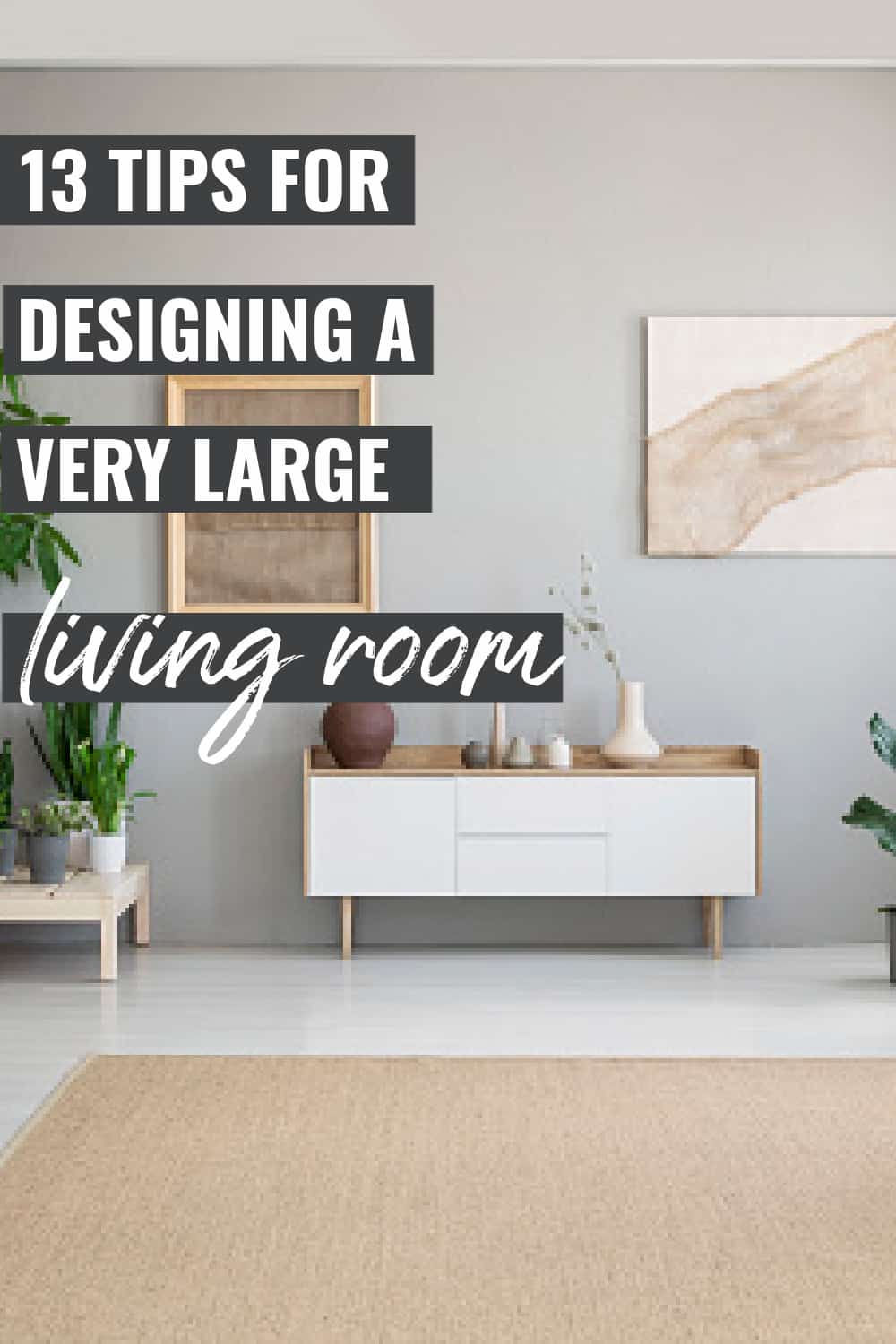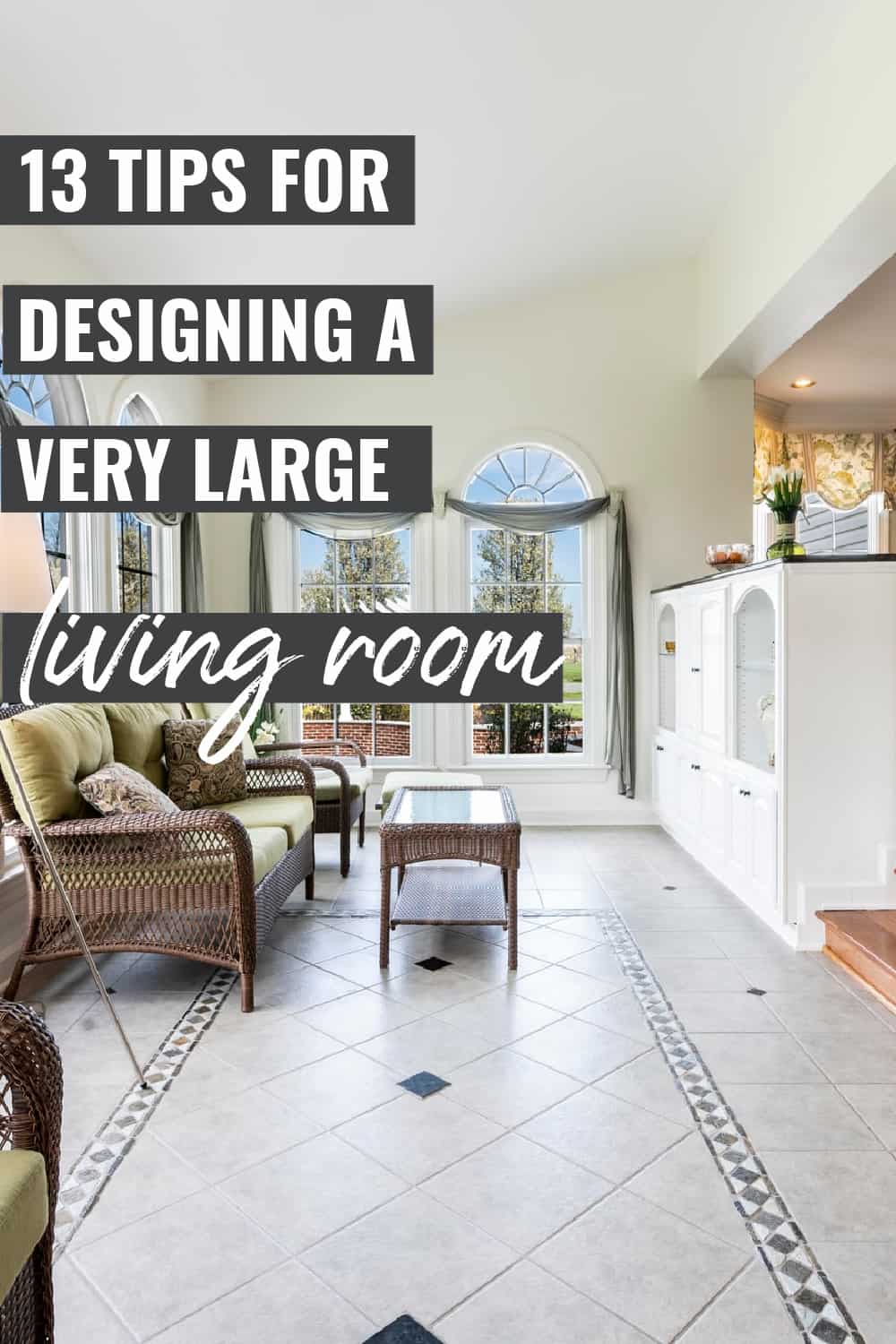Large living rooms can be one of the most challenging spaces to design and decorate in a manner that is visually and aesthetically pleasing. In truth, it can be difficult to achieve a well-thought out design when there is an excess of space to utilize.
This post contains affiliate links. Please read our full disclosure here.
In order to achieve a well-designed large living room space, it is vital to take into consideration the principles of interior design and how they can be applied to a living room’s décor, organization, layout, and general style.
In this article, we will explore how to think through the lens of interior design principles when creating your living room space including how go about organizing and arranging the space according to these principles.
Interior Design Principles for a Large Living Room
The principles of design lay at the core of any well-designed space and having a good working understanding of each principle and how to apply it to living room décor is essential when designing a large living room space.
There are 7 main principles of interior design that are used to conceptualize and create indoor spaces. They are as follows:
- Balance: The way in which objects, furniture, and décor are placed around a room gives them differing visual weights – balance is achieved by finding ways to equalize those visual weights with one another.
- Emphasis: Objects, artwork, furniture, and other décor can all be used to draw attention to a focal subject or object in the room. For living rooms, this is generally a couch or main coffee table, but can also be another object such as a television or a statement piece of artwork.
- Contrast: Contrasting colors, patterns, and shapes can be used together to different visuals within the same space that give the space a greater complexity.
- Rhythm: Patterns and repetition within a space work together to give a room a sense of rhythm that allows the eye to move easily around the room.
- Scale and Proportion: Scale and proportion take into account how the size of décor and furniture compares to the size of the room and can be used to make the space more visually compelling by using décor that is complementary in size to the room itself.
- Harmony: Harmony is represented when elements such as décor and furniture within a space can relate to each other in some, creating a sense of connection throughout the room.
- Unity: Unity is achieved when everything within the room works together to tie into a universally understood theme.
How Do You Organize a Large Living Room?
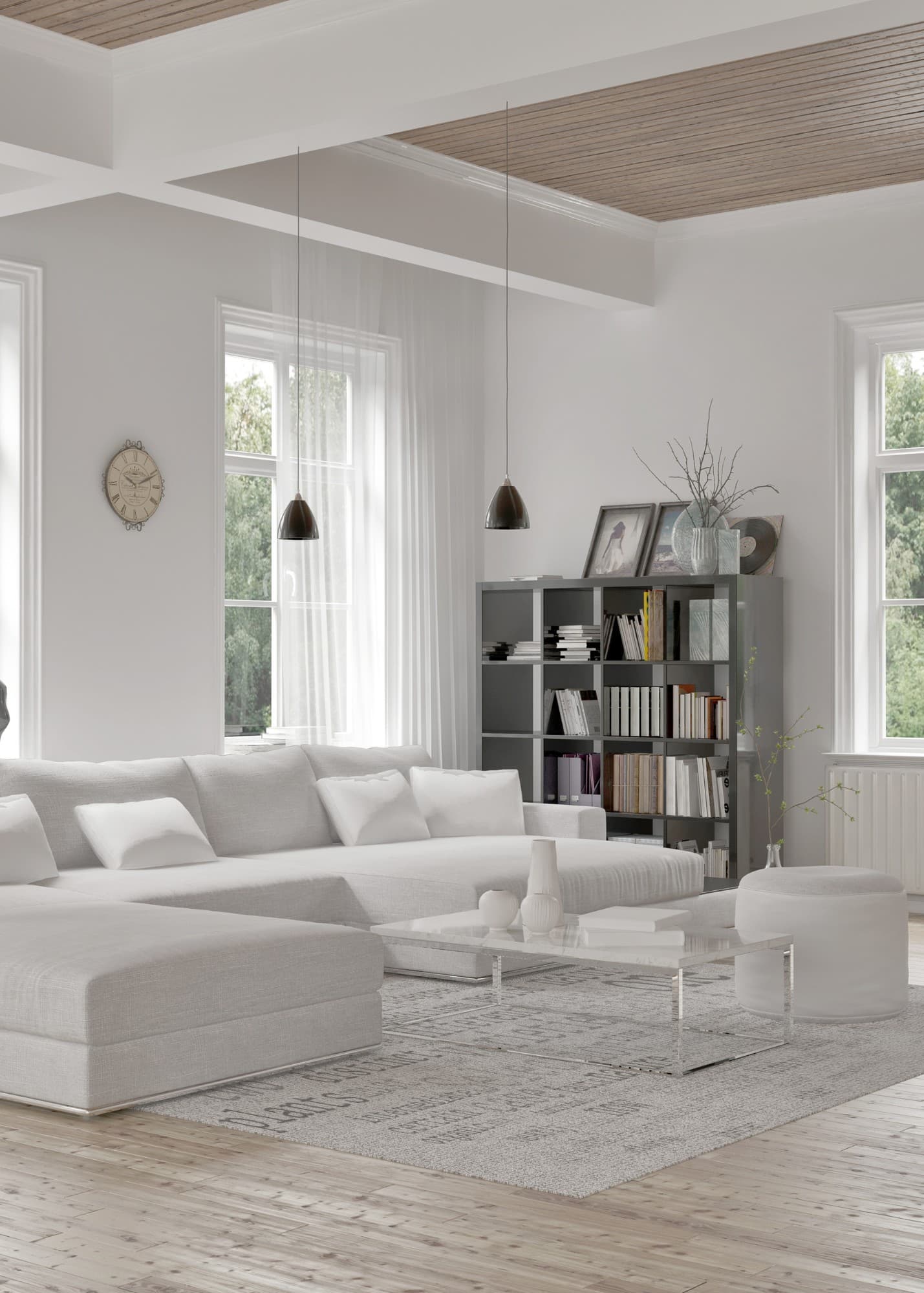
When it comes to organizing a large living room, the principle of scale and proportion should be one of your first considerations as the designer. This is because the general shape and natural layout of the room will play a large role in how the other principles are applied. Having a good mental image or floor plan of the shape of the space and size will be key to finding the proper ways to create balance.
Speaking of balance, there is an important decision to be made in terms of balance as a design principle – whether to design according to symmetrically or asymmetrically. As mentioned, there are different types of balance that can achieve an equal distribution of visual weight around a room.
Symmetrical balance occurs when two sides of a room mirror each other, generally featuring one central object or piece of furniture. This type of balance makes it very easy to make visual weight feel well-distributed within a room.
Asymmetrical balance is exactly the opposite. It is purposefully unbalanced, with one side of the room featuring a dominant or large element of décor and the other side having several smaller items.
According to Smashing Magazine:
“A balanced composition feels right. It feels stable and aesthetically pleasing. While some of its elements might be focal points and attract your eye, no one area of the composition draws your eye so much that you can’t see the other areas.”
While symmetrical balance is the easier option to achieve, asymmetrical balance offers more variation for how the room can be organized. With asymmetry, a living room can be divided into different zones much more easily. For instance, one side of the room can feature a large sectional couch and television, while the other side can be divided through design to be a reading nook.
Here are some additional tips for how to organize a large living room:
- Furniture Spacing – with a large space, you don’t want to cluster furniture to close together as this will leave large empty spaces around the room.
- Wall Hugging – it is best in larger rooms to not place too much furniture or décor directly against the wall, as this will leave a lot of space in the center of the room. Moving furniture away from the wall and using art, mirrors, or other hanging décor to accentuate the wall works much better visually.
- Consider Natural Light – if your large living room also has large windows, organizing the room according to how that light shines in may be best. Keep in mind how glares may affect certain design elements, such as televisions, and consider how to work in window coverings into the overall design as well.
RELATED: Gorgeous Sectional Sofas from Wayfair
How Do You Arrange a Large Square Living Room?
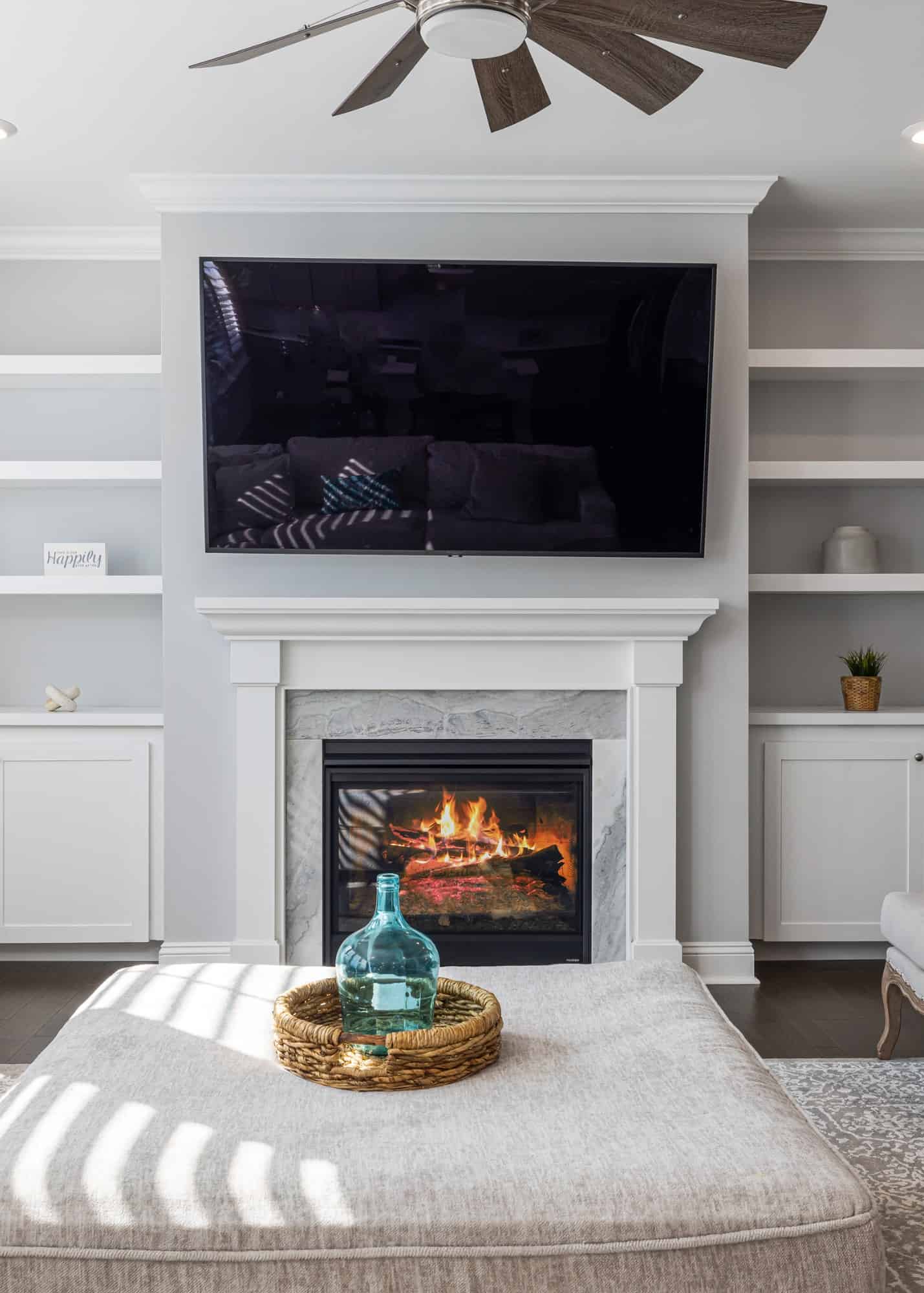
If you have a large living room that is a perfect square, many of the same tips and tricks will apply for organization. However, with a square living room, there is the option for achieving radial balance.
Radial balance has a focal element, oftentimes a square or round coffee table, that sits in the exact center of the room. All other elements within the room fan out in a circle from this focal point, creating a circular (radial) balance around the room.
Square living rooms are also a good place to put symmetrical balance to use. Large symmetrical couches, tables, matching chairs, and more can all be easily centered and accentuated within a square space.
Additionally, floor elements such as large square or circular rugs can be used to define the space better. On large enough rugs, seating and other furniture can all be placed on top to create a designated sitting area that leaves the entirety of the walls for other décor.
How Do I Fill a Large Living Room Wall?
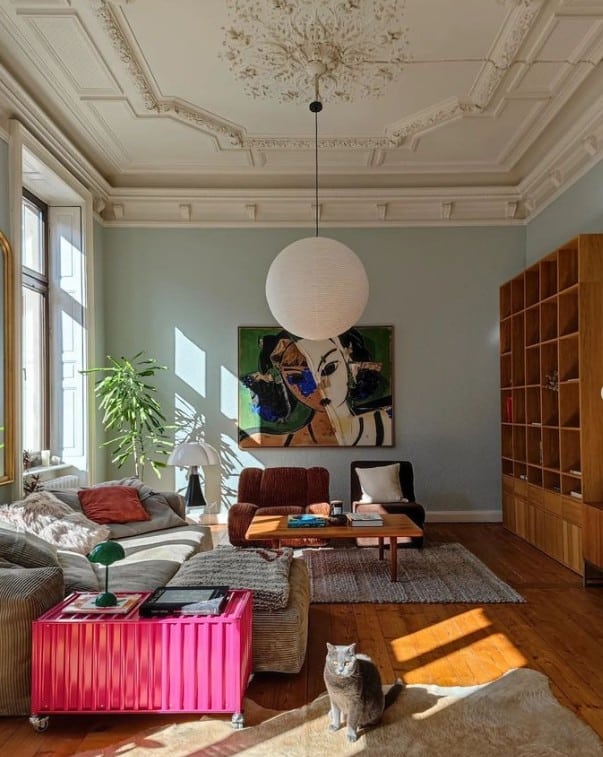
When it comes to decorating the walls in a large living room, it is important to frequently consider how wall décor affects the proportioning within the room. Wall elements will have different visual effects depending on the height of the walls and ceiling.
According to the American Institute of Interior Design:
“Whenever possible, if against a wall, furniture and accessory placement should take up around 60% of the width of the wall space. One should also consider placement of accessories like art, plants and mirrors to match these proportions. Accessory heights (e.g. faux plant heights) should also take up roughly 60% of wall height where possible, and where the size of the room allows for it.”
Here are some great examples of what to use to fill the walls in a large living room:
- Large paintings, prints, or other artwork
- Tapestries and hanging rugs, preferably large ones that can be the focal point of a wall
- Bookshelves placed up against the wall – consider how the organization of the books can also play into the room’s design
- Tall leaning mirrors – drape a scarf or small blanket over one of the top corners to create a cozy effect
- Statement pieces, such as large sculptures
- Mounted shelves that give the illusion of floating
Large Living Room Furniture Layout Ideas

When it comes to large living room furniture layouts, the first step you should take is deciding what your focal element of the room will be. For many, a couch will be used as the focal point, and the placement of other room elements will be dependent on the location and positioning of the couch.
As mentioned earlier, when planning the layout of a living room it is crucial to have a good image or floor plan of the room’s size and shape that can be referenced when picking out décor elements. This will help you to draft out different designs before actually carrying them out so that you have ample opportunity to be creative and try out different styles.
Check out these awesome floor plan ideas for some extra inspiration!
RELATED: Best Living Room Tiles {how to choose the best tiles for your living room}
Large Living Room Decorating Ideas
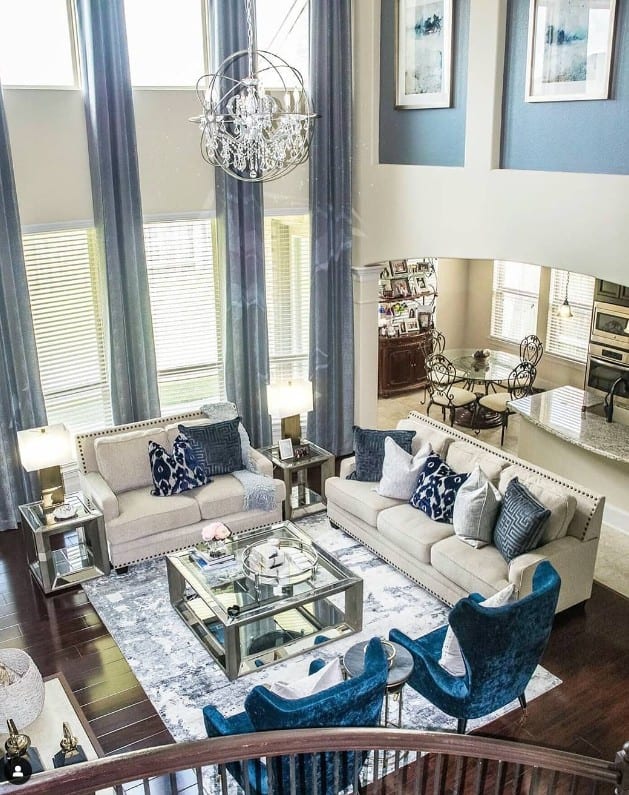
When it comes to choosing décor, it is essential to establish a foundational color scheme and overall theme for a room. By doing so, decorative elements within the room will be able to easily relate with one another and create a sense of harmony throughout the room.
Here is a list of some of the best décor to add into a large living room:
- Artwork, artwork, artwork – Large spaces are one of the best opportunities to showcase large pieces of art – or, alternatively, collections of smaller art placed together.
- Large standing plants – If you have a green thumb, a large living room is a great chance to add some natural flare with large plants such as a monstera or yucca.
- Decorative tall lamps – There are tons of interestingly designed lamps on the market, and choosing decorative lighting that matches your theme is a great way to add more light into your space.
Final Thoughts
Designing a large living room can be quite the challenge, but the final result will be so rewarding with some consideration placed on the application of the principles of interior design. Scale, proportion, and balance should all be given extra careful planning so as to organize and decorate a room in the best way possible. Remember to try and get your hands on a floor plan of the room to help with sizing!
More Living Room Ideas:
- The Best Living Room Designs for Small Spaces on a Budget
- The 7 Best Oversized Reading Chairs of 2020
- 7 Beautiful Accent Chairs for Any Budget {+ how to choose the right one for your home}

